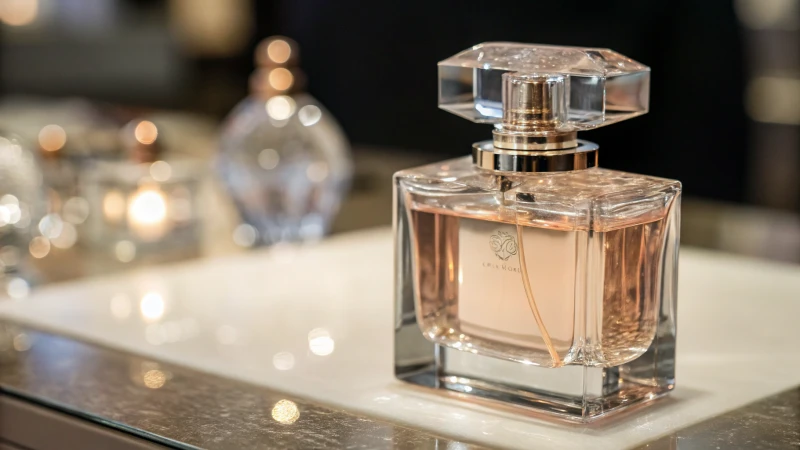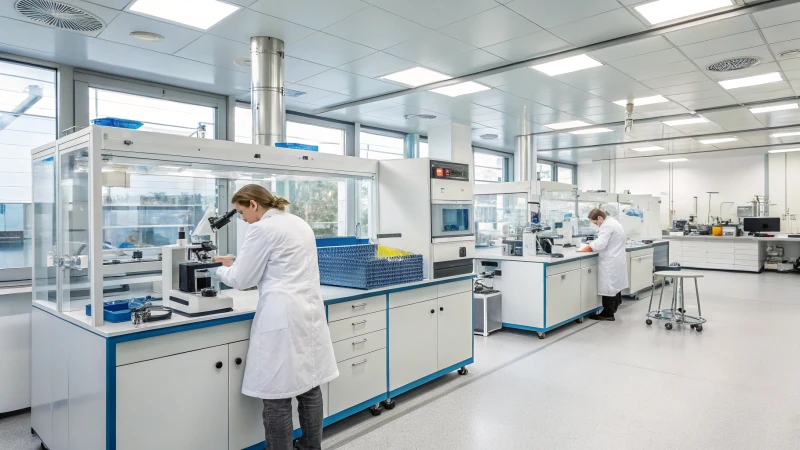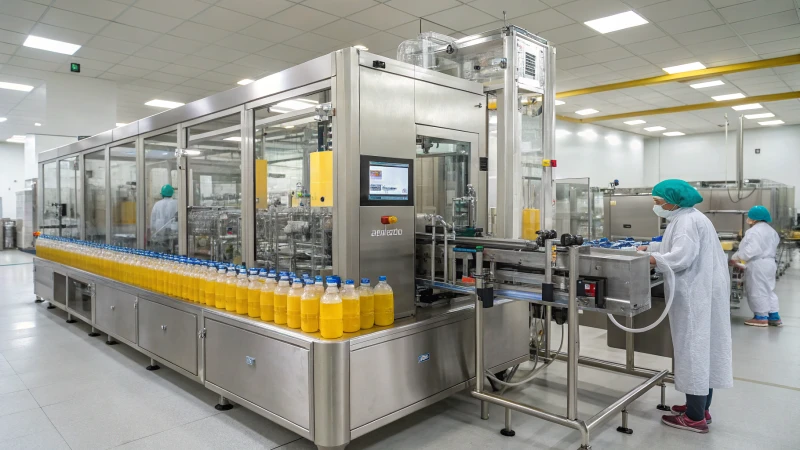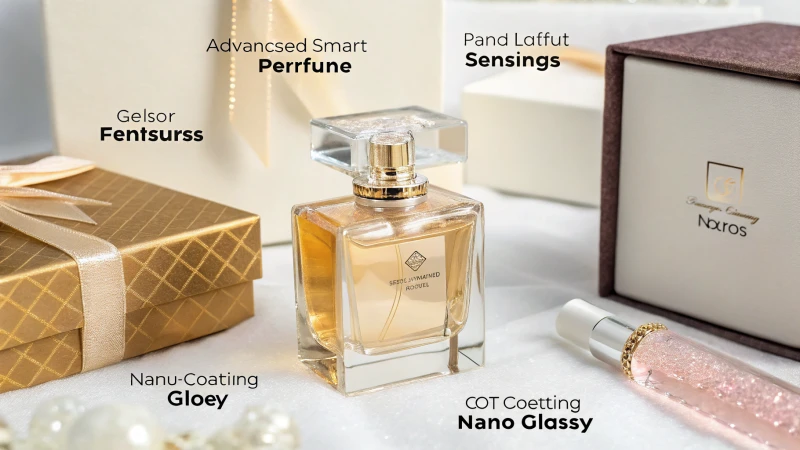
Have you ever wondered how perfumes maintain their enchanting aroma for so long?
Creating airtight seals for cosmetic glass containers involves addressing microscopic defects on the glass, ensuring chemical compatibility between caps and bottles, and using advanced filling technologies to prevent fragrance degradation.
I remember the first time I encountered the invisible challenge of microscopic defects on glass. It was a learning curve that reminded me of the precision required in this craft. Just like in life, where small cracks can create big impacts, those tiny imperfections on glass can cause scents to evaporate and lose their essence quickly. Leading brands combat this by using cutting-edge scanning technology to spot even the tiniest flaw. And let’s not forget the magic of high-performance plastics for caps, which prevent chemical reactions that could spoil the scent. Embracing these practices not only preserves the fragrance but also extends its life, giving you more of what you love.
Microscopic defects on glass affect airtightness.Wahr
Defects can compromise seals, allowing fragrance to evaporate.
Chemical compatibility is irrelevant for airtight seals.Falsch
Incompatible materials can cause seal failure, affecting airtightness.
What Are Microscopic Defects and How Do They Affect Sealing?
You know those little things you can’t see but cause all sorts of headaches? Microscopic defects are just like that for seals.
Microscopic defects are tiny, often undetectable surface imperfections that compromise seal effectiveness. They lead to leaks, contamination, and reduced lifespan by affecting seal integrity.

Understanding Microscopic Defects
Imagine sitting with your favorite book and suddenly realizing the binding is loose. That’s kind of what microscopic defects do to seals. These little troublemakers, like tiny cracks, air bubbles1, or surface bumps, seem harmless but can disrupt the seamless contact crucial for effective sealing. I remember once being baffled during a project when a perfectly fine seal kept failing—only to find out these invisible flaws were the culprits. They often sneak in during manufacturing and get worse with pressure or temperature changes.
Impact on Sealing Efficacy
Seals are like the bouncers at your favorite club, keeping unwanted elements out. But introduce microscopic defects2, and it’s like giving those gatekeepers faulty instructions. These flaws create little escape routes for fluids or gases, causing leaks, contamination, or worse. I’ve seen industries like pharmaceuticals or food packaging scramble to fix such issues because a compromised seal can mean product recalls or safety hazards.
| Defect Type | Potential Impact |
|---|---|
| Tiny Cracks | Leak paths for gases/liquids |
| Air Bubbles | Weakens material integrity |
| Surface Irregularities | Reduces contact area |
Examples Across Industries
- Automotive Industry: Picture a car with a coolant leak due to a defective gasket seal—engine performance takes a hit, and so does safety.
- Food Packaging: I’ve heard stories where tiny packaging defects led to spoilage, ruining entire batches of food products.
- Pharmaceuticals: In this industry, precision is key. A single defect can compromise drug sterility, leading to costly recalls.
Detection and Prevention Techniques
To tackle these pesky problems, industries have turned to high-tech solutions. I’ve seen companies use advanced scanning technologies like laser scanning or electronic microscopy to catch defects that the naked eye would miss. Techniques such as nano-coating3 have been a game-changer, enhancing surface hardness and reducing new defect formation.
The table below outlines common detection methods:
| Detection Method | Description |
|---|---|
| Laser Scanning | Identifies defects at micron-level precision |
| Electronic Microscopy | Provides detailed images of surface defects |
| UV Light Scanning | Highlights micro-cracks with ultraviolet light |
By recognizing and addressing microscopic defects, industries aren’t just improving product reliability—they’re boosting lifespan and ensuring safety across various applications. It’s like having an invisible shield that fortifies everything from perfume bottles to car engines.
Microscopic defects can cause seal leaks.Wahr
Defects create pathways for fluids or gases to escape, leading to leaks.
All microscopic defects are visible to the naked eye.Falsch
These defects are imperceptible without advanced tools like microscopy.
How Can Plastic and Glass Interactions Be Managed?
Ever wonder how your favorite perfume bottle stays intact despite being a blend of plastic and glass?
To manage plastic and glass interactions, it’s crucial to choose compatible materials, apply advanced sealing techniques like nano-coatings, and embrace technologies such as biodegradable plastics and smart packaging. These strategies prevent chemical reactions, enhance durability, and support sustainability.

Understanding Material Compatibility
In the fascinating world of packaging, understanding the compatibility of materials4 is absolutely essential. I remember the first time I had to figure out why a beautifully designed perfume bottle started leaking. It turned out the plastic cap wasn’t a good match for the glass body. Choosing high-performance plastics like PEI or POM can make all the difference, as they offer excellent resistance to chemical reactions that might otherwise compromise the seal and integrity of the product.
| Material | Resistance Level |
|---|---|
| PEI | High |
| POM | High |
| PVC | Low |
Picking the right materials can be the key to avoiding those pesky chemical reactions between plastic and glass.
Advanced Sealing Techniques
Sealing is where the magic happens—keeping your product fresh and intact. I once visited a factory where they used nano-coating on glass surfaces to prevent cracks, which can lead to perfume evaporation5. Watching them apply vacuum sealing technology was like witnessing a mini sci-fi movie. It’s these advanced techniques that ensure minimal air contact within containers.
Innovations in Technology
Technology in packaging has come a long way. Imagine this: smart packaging with RFID sensors that monitor storage conditions in real-time. I was skeptical at first, but these innovations truly enhance user experience by providing vital information about temperature and humidity6 inside the bottle. And let’s not forget laser scanning technology—it spots micro-cracks on glass surfaces, ensuring top-notch quality.
Environmental Considerations
Sustainability is more than just a buzzword; it’s a responsibility. Manufacturers are now exploring biodegradable plastics that are not only eco-friendly but also compatible with perfume ingredients7. I’ve found that integrating these eco-friendly alternatives can significantly boost a brand’s image while appealing to environmentally conscious consumers.
Managing these interactions effectively requires a thorough understanding of material science, innovative technology application, and a commitment to environmental responsibility—a trifecta that industry professionals must master.
PEI has high resistance to chemical reactions with glass.Wahr
PEI is noted for its high resistance level in the provided context.
PVC offers high resistance in glass interactions.Falsch
PVC is listed as having low resistance to chemical reactions.
How Does Filling Technology Enhance Airtightness?
Have you ever wondered what keeps your favorite perfume fresh or your home energy-efficient?
Filling technology is crucial for airtightness by reducing air content during packaging or construction. Techniques like vacuum and inert gas filling prevent air exposure, enhancing longevity and efficiency.

Advanced Filling Techniques
Imagine opening a bottle of perfume only to find that its scent has vanished into thin air. It’s heartbreaking, especially if it was a gift from a special someone. That’s where vacuum filling comes in—this technique removes air from containers before sealing, ensuring perfumes stay fresh longer by minimizing air exposure8. I’ve come across this approach often in the perfume industry, where maintaining fragrance quality is paramount.
Inert gas filling is another fascinating method. It replaces air with gases like nitrogen, which helps prevent oxidation, a silent destroyer of sensitive products. I once had a client in the electronics industry who swore by this technique to keep their products pristine during long sea voyages.
When it comes to construction, think of expanding foams as the invisible force field against heat loss. These technologies fill gaps in buildings, keeping homes snug and energy-efficient during those cold winter months. It’s something I wish I had known earlier when my heating bills shot up unexpectedly.
Importance in Different Industries
In the food packaging industry9, airtightness is not just about keeping things fresh—it’s about preventing spoilage and contamination. Modified atmosphere packaging (MAP) is a technique I’ve seen revolutionize the food industry by using specific gas mixtures to extend shelf life. Similarly, in construction, airtightness isn’t just about comfort; it directly impacts energy consumption and moisture control.
Here’s a comparison of common filling techniques:
| Technique | Application | Benefits |
|---|---|---|
| Vacuum Filling | Perfumes | Reduces air exposure, extends shelf life |
| Inert Gas Filling | Electronics | Prevents oxidation, enhances preservation |
| Expanding Foams | Construction | Seals gaps, improves thermal insulation |
Challenges and Innovations
Even with advanced techniques, achieving perfect airtightness remains elusive. Micro-defects in materials can be a deal-breaker. I recall an instance when a client faced issues with seals due to unseen defects. Innovations like nano-coatings and precise scanning technologies are stepping up to address these challenges.
Cost versus effectiveness is another tightrope walk. High-performance materials offer superb airtightness but come with a hefty price tag, which I’ve seen influence decisions across both manufacturing and construction sectors.
Yet, with emerging smart sensors10 providing real-time data on seal integrity, we’re on the brink of a new era in airtightness—one where we not only build better but also smarter.
Vacuum filling is used to improve airtightness in perfumes.Wahr
Vacuum filling reduces air exposure, prolonging fragrance longevity.
Expanding foams are used in the food industry for airtightness.Falsch
Expanding foams are primarily used in construction for sealing gaps.
How Can Smart Packaging Improve Fragrance Preservation?
I’ve always loved the world of fragrances, where a single spritz can transport you to another time and place. But did you know that smart packaging is changing the game in preserving these delicate scents?
Smart packaging improves fragrance preservation by using advanced technologies such as nano-coatings, precision filling, and IoT sensors. These innovations enhance airtightness, monitor storage conditions, and extend shelf life, ensuring the scent remains intact.

Advanced Sealing Technologies
I remember my first visit to a perfume factory, watching the meticulous sealing of bottles. Maintaining that airtight seal is crucial in preserving a fragrance’s essence. Smart packaging now uses precision glass molding11 and nano-coating technologies to combat even the tiniest of defects. Imagine using laser scanning und electronic scanning like detectives hunting for clues, finding micro-cracks invisible to the naked eye, yet critical to keeping your favorite scent fresh.
| Technology | Benefits |
|---|---|
| Nano-coating | Increases glass hardness and airtightness |
| Laser scanning | Detects microscopic defects |
| Electronic scanning | Identifies air bubbles or surface flaws |
Chemical Compatibility in Bottle Design
Perfume bottles are often a dance of materials—glass and plastic working together to hold the precious liquid inside. My experiences have taught me that not all plastics are created equal. High-performance materials like PEI12 und POM are like the unsung heroes, resisting reactions with volatile perfume compounds. And those UV protection layers? They’re like tiny sunscreen shields for your perfume, preventing sunlight from sneaking in and spoiling the show.
- High-performance plastics: Resist chemical reactions
- UV protection layers: Prevent sunlight-induced degradation
Precision Filling Techniques
The first time I saw precision filling in action, it was like watching a choreographed ballet. Traditional methods often leave excess air in bottles, but smart packaging employs vacuum filling und gas protection technologies to remove air during the filling process. This step is like giving your perfume a longer life, reducing its contact with air and keeping it fresh longer.
- Vacuum filling: Minimizes air content inside the bottle
- Gas protection: Uses inert gases to prevent oxidation
IoT-Enabled Monitoring
In today’s tech-savvy world, even our perfumes get the IoT treatment. Smart packaging integrates sensors that monitor conditions like temperature and humidity right inside the bottle. It’s like having a personal assistant for your perfume, available through a smartphone app, guiding you on how best to store your fragrance for longevity.
- RFID tags and sensors: Monitor air content and temperature
- Smartphone integration: Provides usage and storage suggestions
With these innovative technologies13, fragrance lovers can enjoy scents that remain as vibrant and alluring as the day they were bottled. These advancements not only enhance the consumer experience but also redefine quality standards in the fragrance industry.
Nano-coating increases glass hardness and airtightness.Wahr
Nano-coating strengthens glass, preventing air leakage and preserving fragrance.
IoT sensors in packaging do not monitor temperature.Falsch
IoT sensors track temperature to optimize perfume storage conditions.
Schlussfolgerung
Airtight cosmetic glass containers preserve fragrances by addressing microscopic defects, ensuring chemical compatibility, and utilizing advanced filling technologies like vacuum and inert gas methods.
-
Learn about the different types of microscopic surface defects and their causes. ↩
-
Understand the specific ways these tiny flaws impact sealing effectiveness. ↩
-
Explore how nano-coating enhances surface hardness and prevents new defects. ↩
-
Learn about how different materials interact in packaging to ensure quality and longevity of products. ↩
-
Discover methods to maintain perfume quality by preventing evaporation through advanced packaging solutions. ↩
-
Explore how temperature sensors in smart packaging enhance product longevity and user experience. ↩
-
Understand the role of biodegradable plastics in reducing environmental impact in cosmetic packaging. ↩
-
Explore how vacuum filling reduces air exposure in packaging and its impact on product preservation. ↩
-
Learn about how MAP technology extends food shelf life by altering the atmosphere inside packages. ↩
-
Discover how smart sensors provide insights into package seal integrity and enhance quality control. ↩
-
Discover how precision glass molding prevents defects that compromise fragrance preservation. ↩
-
Explore the benefits of high-performance plastics in preventing chemical reactions. ↩
-
Learn about cutting-edge technologies revolutionizing smart packaging for perfumes. ↩



